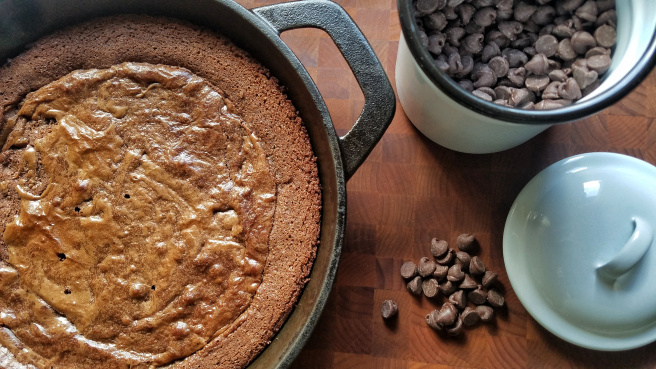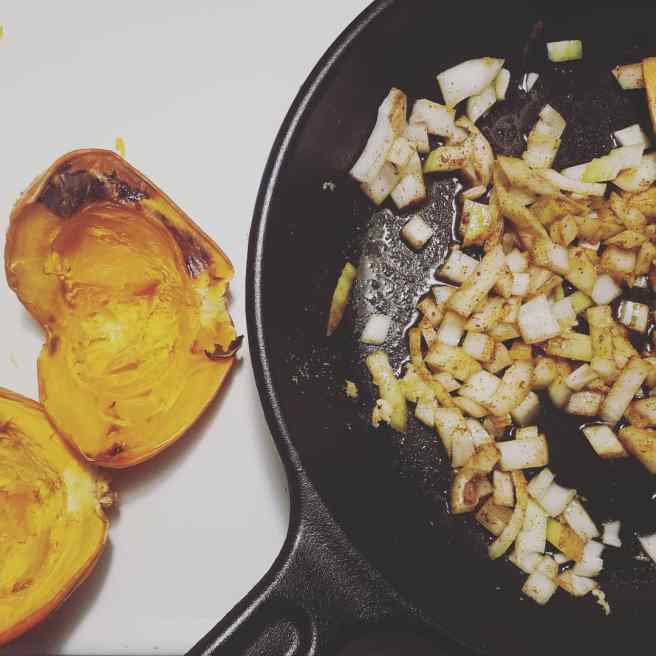Cast iron is officially my favorite kitchenware.
Like most of the good things in life, seasoning a cast iron pan and getting the perfect coating takes patience, a little work and a lot of love.
It’s definitely worth it to spend a little more time taking care of your cast iron to have higher quality cookware. In a society that values speed over quality it is rare that people will do that anymore.

Cast iron pans are awesome because they can be used on the stove, in the oven, on the grill or even over a campfire. They are simple to clean (once well seasoned) and less expensive than other non-toxic cookware options. It is so tough that it can seriously last forever and if you drop it, it is more likely to harm your floor than it is to harm the pan.
Plus it is relatively non-stick! So ya don’t have to use those teflon coated pans. Cast Iron is also the only cookware that besides being non-toxic may actually have health benefits! Small amounts of Iron from the pans can be passed into food.
Many of the problems with cast iron stem from improper seasoning. Seasoning is the process of using an oil or fat to create coating on the surface of the cast iron. This both protects the pan and makes cooking easier. Once a pan is seasoned, the coating can be easily maintained by proper washing and occasional wiping down with oil.
Best Oils To Use For Cast Iron
Many sources recommend vegetable oil or corn oil (which I would highly discourage). I prefer to use traditional fats such as lard or tallow. Or I also sometimes use coconut oil.

Steps To Season Your Pan
Step 1: Thoroughly wash the cast iron pan with soap and water. Normally, it is not advisable to use soap on cast iron, but since it is going to be seasoned, it is fine. If there are any rust spots, use some salt and a little water to make a paste and scrub the rust off.
Step 2: Preheat the oven to 400.
Step 3: Place the pan in the preheating oven for 5-10 minutes to get warm. This extra step helps make the oil more efficient when it is rubbed on the cast iron.
Step 4: Using an old towel or piece of a t-shirt, rub oil or fat of choice around the entire pan, making sure it is entirely coated, inside and out.
Step 5: Using another towel or rag, wipe all of the oil out until only a thin sheen remains.
Step 6: Place upside down in the oven for 1 hour. Turn oven off and leave pan until completely cooled. Depending on the age and texture of the iron, the pan may need multiple seasoning treatments before it is optimal for cooking.
When I got my new cast iron pan, I used it for high fat cooking for the first few weeks after I seasoned it, just so that it could develop a stronger finish (deep frying is optimal for this).
After every use, the pan should be washed immediately and towel dried to prevent rusting. After towel drying them you could even put them on the burner for just a little bit so that any moisture you missed with the towel will get steamed off. I also wipe my pans down with another layer of tallow or lard after each use to keep them ready to use.

Cast Iron Care
The most important part of maintaining seasoning on cast iron pans is using proper care techniques to protect it. Some important things to remember when caring for your cookware:
In general, soap should not be used. The best practice is to wash immediately with hot water and a brush or a chainmail scrubber. A gentle scraper is also very helpful for removing stuck-on food without hurting the finish.
Most sources recommend avoiding highly acidic things like tomato in cast iron, since it can leach more iron and create an off flavor. But I still sometimes cook acidic foods in mine if the pans have been used for a long time and have a good coating built up.
See, caring for cast iron really isn’t that complicated – and the benefits are so worth it!

[…] Here are my instructions on seasoning your cast iron. […]